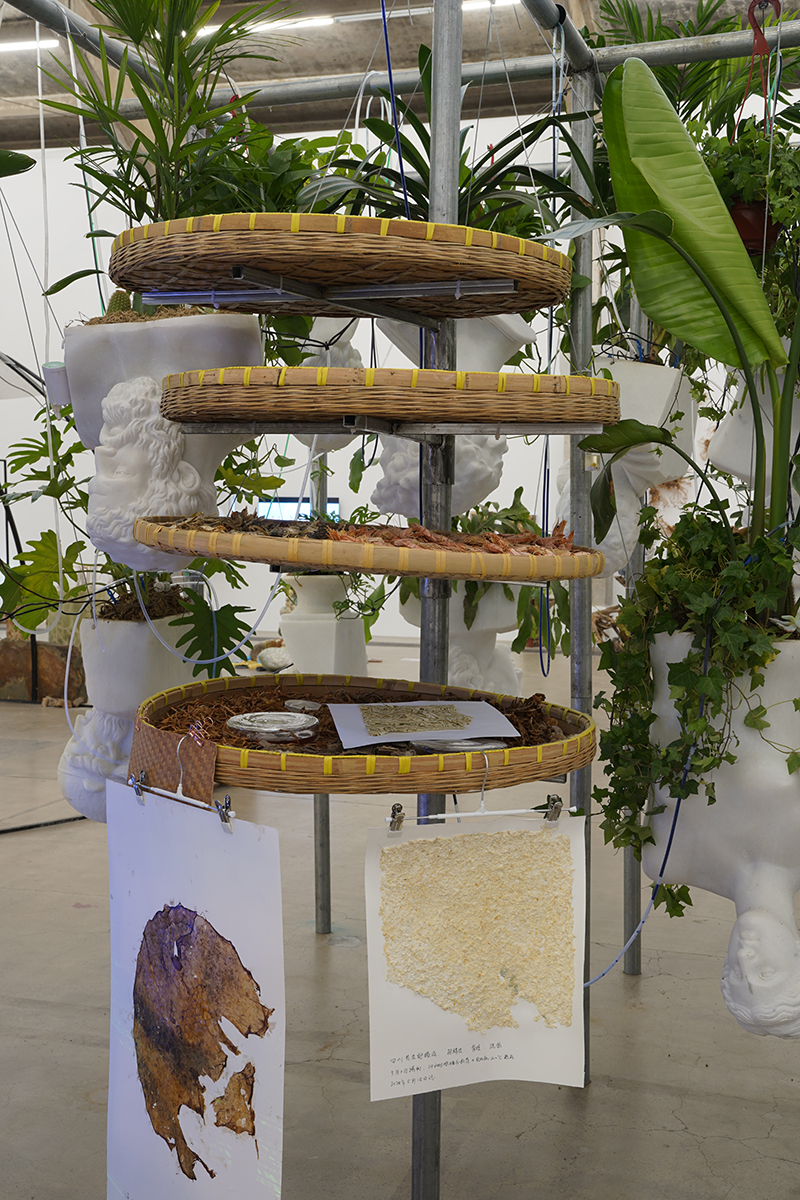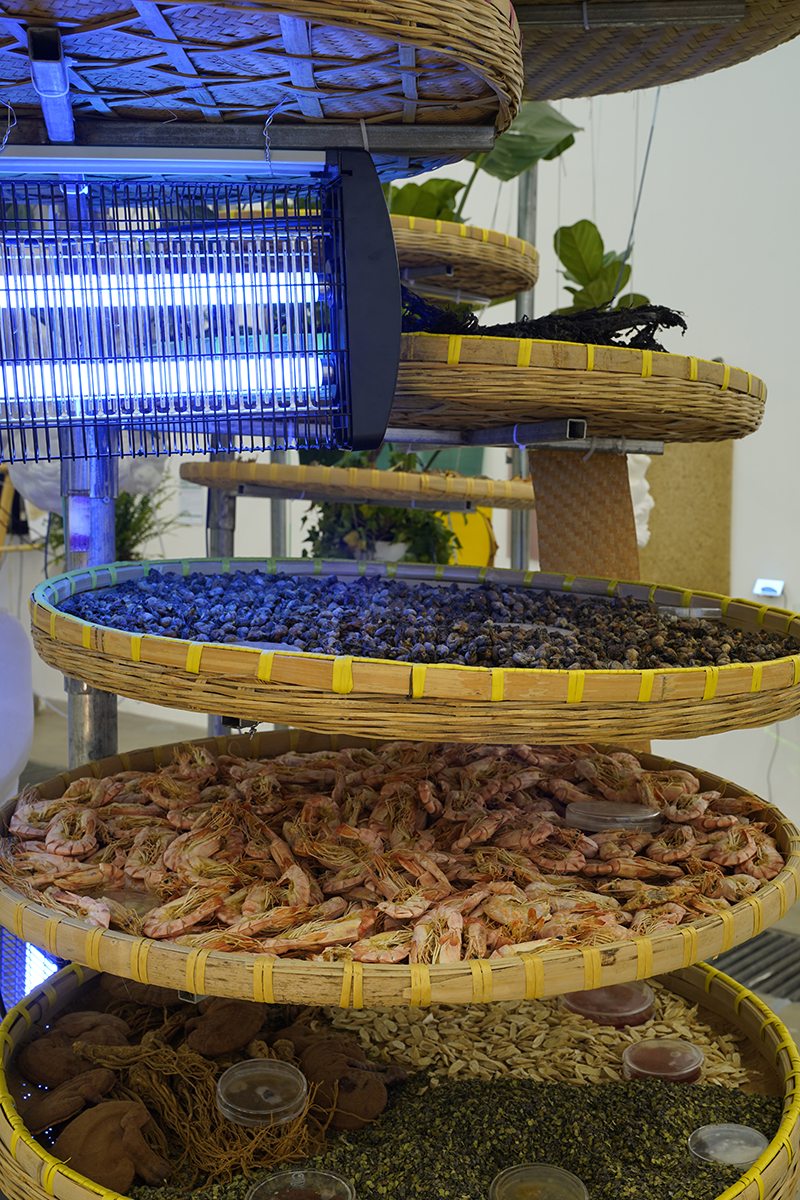Background and Research:
1. The history of human producing flat glass has been more painstaking than one might fathom. Glass, as a material, is naturally suited for being blown into spherical shapes. The ancient Romans attempted to create flat glass by stretching or flowing glass blocks into sheets. In the early 19th century, the advent of the glass rolling process machine facilitated the production of flat glass. The float glass technique, invented by the French, involves pouring molten glass onto a tin bath. The glass would then float and form a smooth surface. This technique remarkably improved the efficiency and quality of glass production.
2. The float glass technique brings to mind the kombucha SCOBY (symbiotic culture of bacteria and yeast) membrane. The membrane is formed through the collective interaction of microorganisms within the SCOBY, primarily yeast and lactobacillus. It appears as a thick, resilient gel-like substance floating on the surface of the fermentation liquid. Consumable kombucha SCOBY membranes once gained popularity due to their perceived health benefits. In recent years, it has been used for creating biodegradable leather alternatives.
3. To obtain flat bamboo products such as bamboo mats, one needs to “unfold” cylindrical bamboo stems. The process involves disassembling the bamboo stem into thin strips and then reweaving them into a flat surface. Flat woven bamboo mats and bamboo sieves serve as essential tools for spreading and drying medicinal herbs and food. Bamboo blinds have also been used as tools for handcrafted papermaking.
4. Duckweed (scientific name: Lemna) is a type of small floating plant that thrives on the water's surface. Duckweed possesses strong reproductive abilities through fragmentation that allows it to rapidly expand and cover the water surface. It reproduces by asexual reproduction, with fragmentation being one of the primary approaches. It forms a group of interconnected leaf blades known as an “individual.” During its growth, small new plants usually split from the edges or leaf axils, gradually growing and forming into new individuals. When the new plants reach a certain size, they often separate from the parent individual and grow independently.
Technical Support: The research team led by Dr. Yang Zhenbiao, a synthetic biologist from the Shenzhen Advanced Technology Research Institute, has developed modified duckweed that exhibits rapid fragmentation.
Concept: This artwork delves into the concepts of flat expansion and proliferation, blurring the boundaries between duckweed growth, papermaking, float glass production, the surface area expansion of porous materials, and the growth of kombucha SCOBY membranes.
Procedure:
1. Install the bamboo woven sieve and bamboo basket on a scaffold structure, stacking them on top of each other for rotational display. Air-dry bamboo shoots, tea leaves, dried shrimp, dried fish, seaweed, nori, various food items, and medicinal herbs on the bamboo sieve.
2. Place glass containers of different diameters on a circular flat glass surface and cultivate bacteria paintings, Taihu algae blooms, and other organisms within the glass containers.
3. Cultivate kombucha SCOBY membranes, which produce biodegradable plastics.
4. Attain handmade paper using a bamboo blind to scoop paper pulp, incorporating materials such as seaweed and duckweed into the paper.
5. Display samples of modified duckweed and showcase a video depicting the process of fragmentation.

 
|
